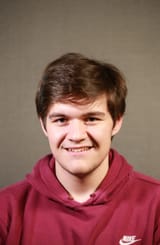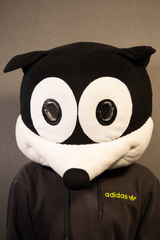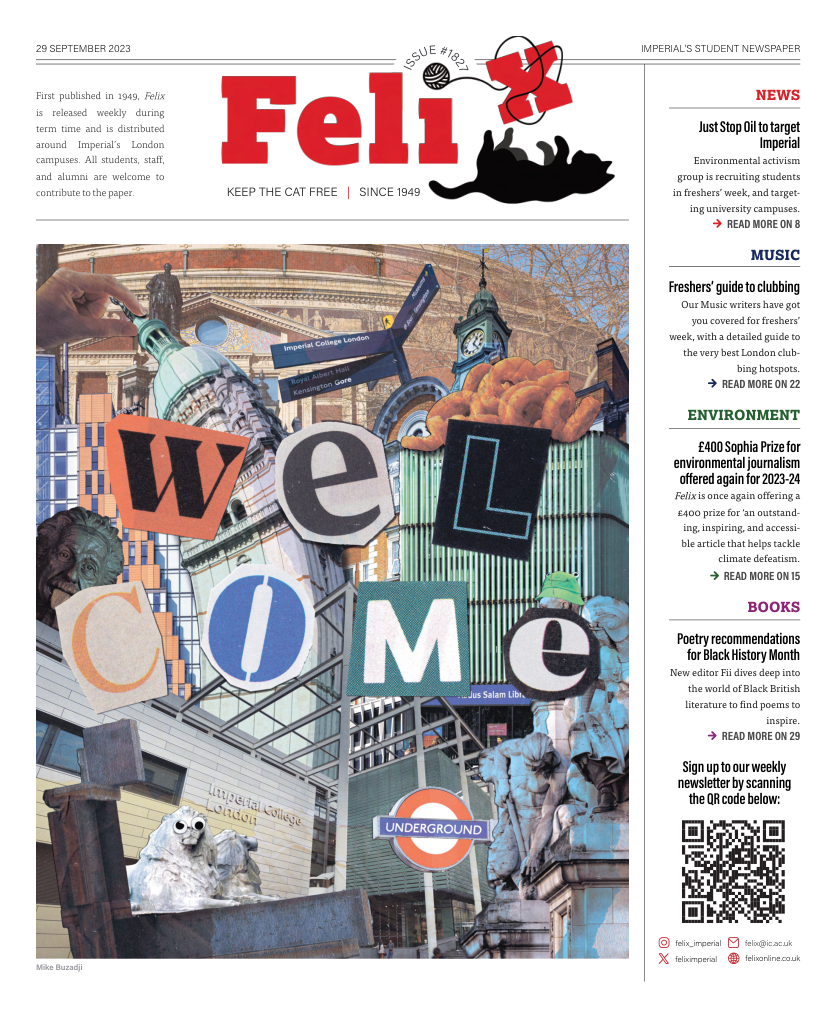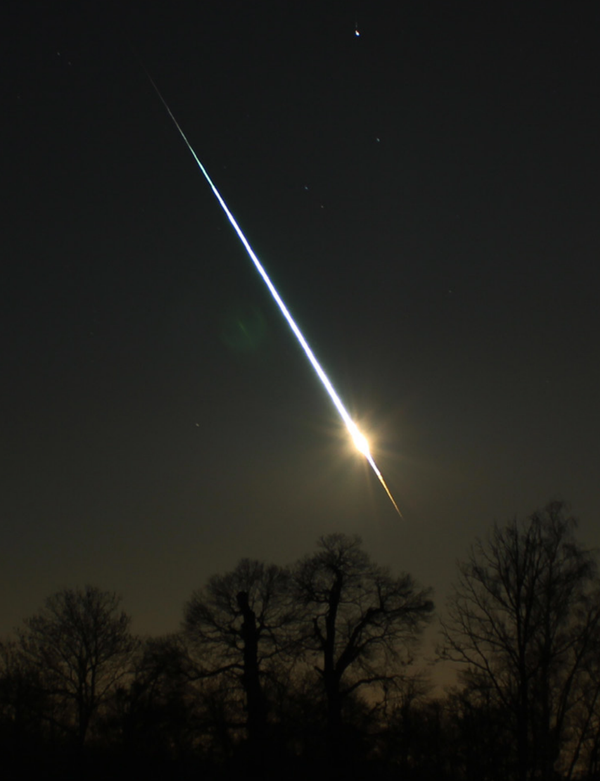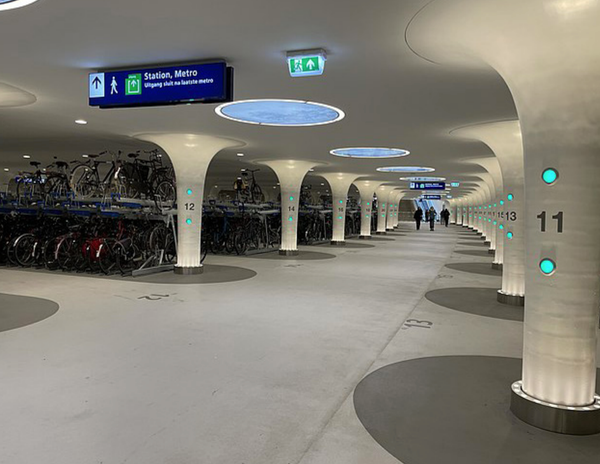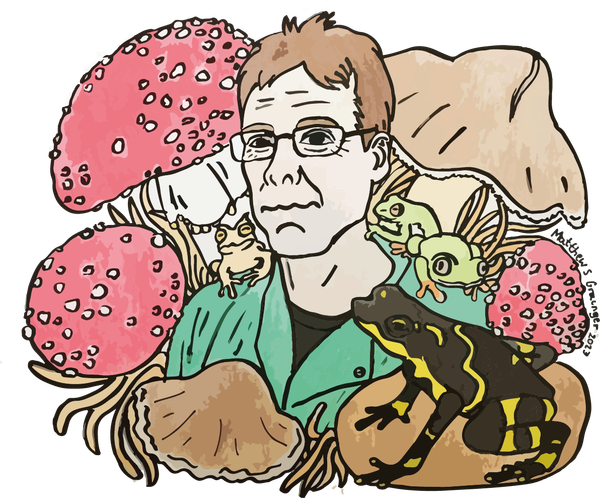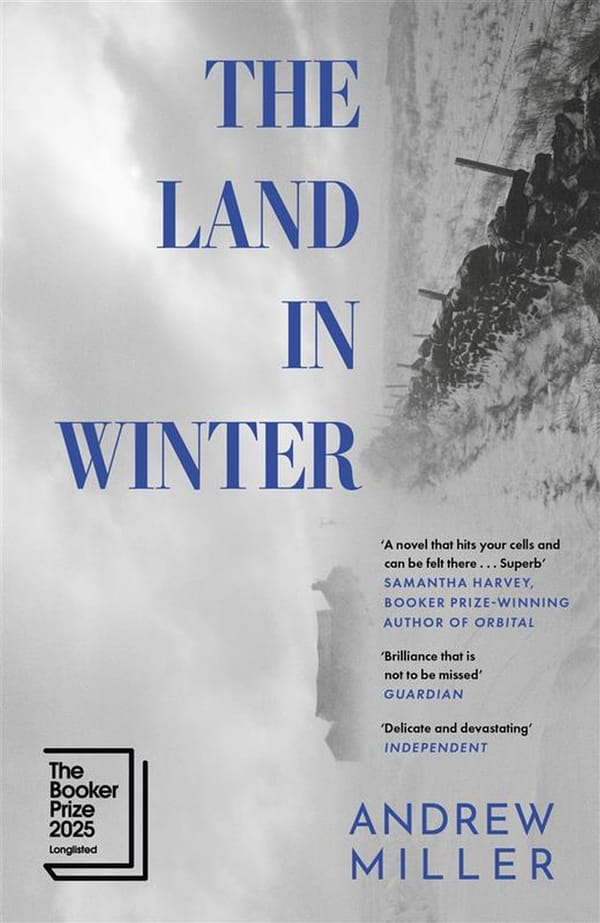Prof Michele Dougherty spills the JUICE
Felix speaks to Michele Dougherty about her role as Principal Investigator on JUICE’s magnetometer.
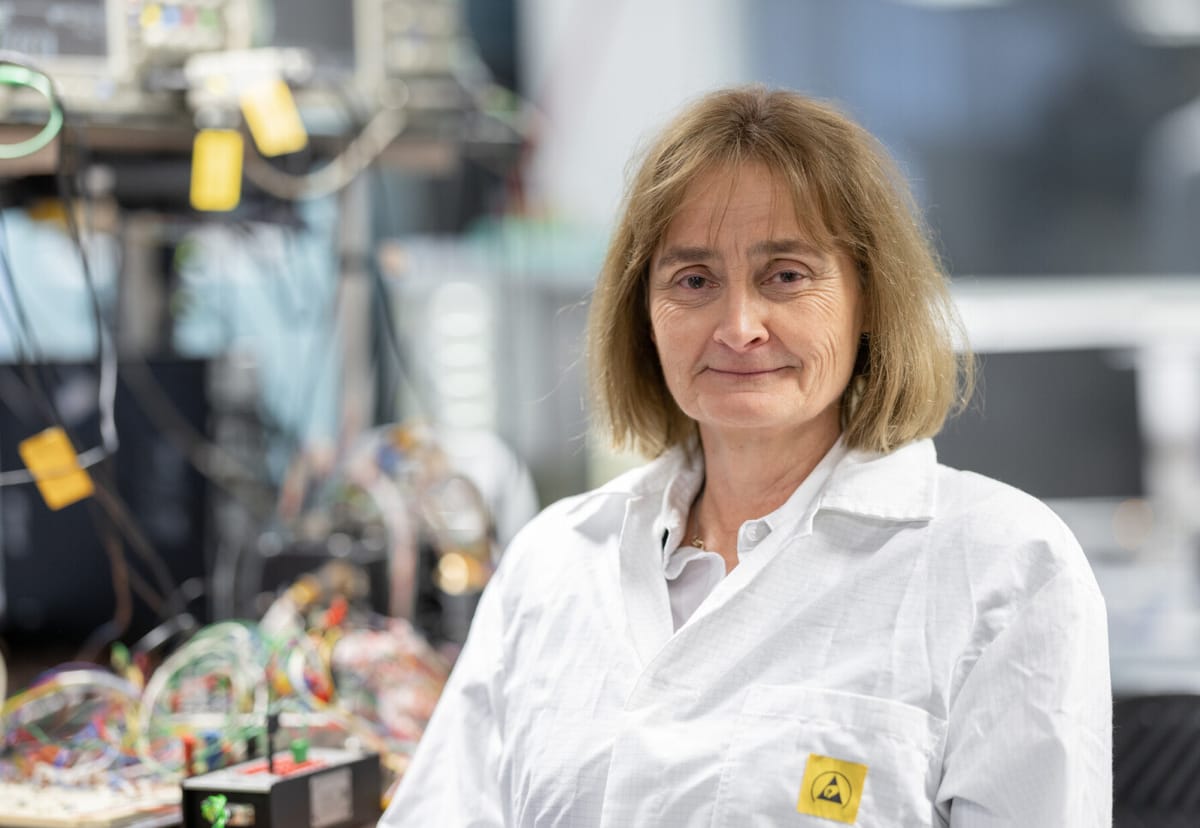
From the view in Michele Dougherty’s office one can see into central London across Hyde Park. It’s a beautiful day, and the late September heat is almost as warm as Michele’s welcome into her office. One of the most immediate things one notices about Michele is her charisma - we speak to her with more ease than we would have thought, and the interview flows more like a conversation than anything else.
Michele Dougherty, Head of the Physics Department, is renowned for her pioneering work in planetary science, and her role as the Principal Investigator for the magnetometer instrument on the JUpiter ICy moons Explorer (JUICE) mission stands as a testament to her expertise and dedication to unraveling the mysteries of our solar system. In this interview, we delve into Michele’s remarkable journey and her critical contributions to the JUICE mission, which is poised to provide unprecedented insights into the enigmatic icy moons of Jupiter: Ganymede, Callisto, and Europa. Her work not only involves deciphering the complex magnetic environments of these moons but also holds the potential to reveal the presence of liquid water, an essential ingredient for the emergence of life beyond Earth. Michele’s leadership and scientific acumen shine as we explore the intricate dance of
magnetism and the tantalizing prospects of extraterrestrial oceans in an ongoing quest to further understand the cosmos.
Personal philosophy
M: When you lead these missions, do you have a personal philosophy? Cassini, for example, ran from 1997 to 2017, it’s 20 years and these missions take place over such a long period of your life.
I wasn’t involved in Cassini right at the start, I became involved once it was launched. It was launched in 1997, and ended in 2017.
I see JUICE as a way of paying back for Cassini, I wasn’t involved in the initial ideas about Cassini - in doing so I became involved in all the great science without getting involved from the start. JUICE is a payback, and I do hope I’m around once we get there.
To put it into context, we first started thinking about a Jupiter-like mission back in 2008/2009, I was asked to lead the Science Definition team, put the mission together, and we sent the proposal to the European Space Agency (ESA) in 2012. I then stepped back, as I wanted to propose to build an instrument. During the COVID lockdown we started building the instrument, and then launch was halfway through!
Developing a magnetometer
T: Proposing an instrument to the ESA - is it a competitive process?
Oh, yeah - it’s a competitive process. What we did on the team is we looked at the science, put together a model payload, and suggested to ESA that this is what we think are the instruments needed to do the science, and used that as a basis to then put out a call saying these are the instruments we’re looking out for, you could even propose a separate instrument. It is an international competition, people around the world propose, you feel very nervous if you don’t get chosen! I ensured that a number of competitors were on my team, making it easier for them to choose. In the end, there were three or four different teams that put forward a proposal for the magnetometer instrument. Fortunately they chose us - and then that was the start of the hard work - we said in our proposal we can do all of this great science - but we needed to make sure we could build the instrument so we could actually do it - and I think we have - it’s a beautiful instrument - even if I say so myself!
M: We spoke to Dr. Nicola Fox earlier this year, head of Science at NASA, and she discussed Imperial’s prestige with magnetometers on projects like JUICE, the Parker Solar Probe; what makes Imperial so good at making magnetometers?
From my perspective, the most important thing is that we’re driven by the science that we want to do. We don’t just crank the handle and build instruments, we decide what science we want to be involved in, and lead, and build the instruments linked to that. That’s our strength, we’re driven by the science. We have a fantastic engineering team, but it’s the science that we do that drives what we want to build. We’re never sure if we’ll be chosen - but if we’re chosen that’s of course great!
T: How are magnetometers used in planetary science? What types of magnetometer are used in your
missions?
From my perspective, I’m interested in the planetary science, and one of the most important realisations that we’ve come to in the last 20 years is that you can use magnetometer instruments not only to measure the environment inside a planet, but you can use them to see inside the planet as well, and the planet’s moons too. And so, magnetometers are always described as in-situ instruments, they take the measurement where you’re at - but in some sense they’re remote sensing instruments too - measurements you take on the outside allow you to work out what’s going on inside. As far as evolving is concerned: there are two types of instruments that can and are being built. There are the Rolls-Royce type instruments, that go on planetary missions like JUICE, and there you need to be flying an instrument that has a lot of flight heritage - you don’t want to be flying something that might not work - ESA and NASA know that. For a JUICE-type mission, you need to show the instrument is at Technology Readiness Level (TRL) 9, which is ready to go into outer space. In fact, one of the sensors we built for JUICE was at TRL 5 that was first chosen, that was a scalar sensor. We had, during the build phase, it was flown on a Chinese mission that showed it was able to fly. For smaller missions, CubeSat for example, you can fly these small magnetoresistive sensors, those are very light, and you can afford to fly them where the TRL isn’t so high. It’s a test case; if it works, it demonstrates you can fly the instrument on a subsequent mission. It’s a prong approach - build the best instruments you can but also make sure the ones that’ll give you the best science output are the ones that are known best, and you know they will work.
But we still fly more than one - on JUICE, we’ve got three! We usually fly two, if you want to measure the magnetic field around a planet you want to make sure you’re measuring the magnetic field of the planet and not the spacecraft: and so we put the magnetometers on a very long boom; one on the very end and one halfway down. That allows you, through the gradiometer technique, to measure what we can see halfway down compared to the end, and that works out if there’s any spacecraft field. But it’s also redundant; on Cassini, the one at the end of the boom built by the Jet Propulsion Lab, stopped working once one year after we got there; so we only used the one that was halfway down the boom. Space is quite scary! You’re never quite sure what’s going to happen!
You should assume you’re going to come across difficulties at some stage. On Cassini, when the onboard sensor stopped working, we had to think about how you’re going to recalibrate the instrument. One of the things we needed to is know where the zero level of the instrument is: if you’re measuring really small changes in a magnetic field and you’re saying, “Oh, we’re seeing an ocean,” if you don’t know where the zero level is that doesn’t help very much. What we used to do on Cassini is that we used the two different instruments to calibrate each other. Once we only had one left though - we had to roll the entire spacecraft to calibrate the remaining magnetometer: around two separate axes, in a quiet field. When I went to the Cassini project and told them we had to do that, they said: “Really?!”. You need to be ready to think of a solution.
Igniting the Passion for Planetary Science and Breaking Barriers in STEM
M: You mentioned your interest in planetary science, what makes it interesting for you - especially as lots of physicists like space!
It was a rather circuitous route to get there. I was at an all-girls school in South Africa and I didn’t do science at school. They didn’t have science, and I was quite good at maths – my dad worked at the local university, and they were willing to take a chance on me and offered me the opportunity to do a BSc. And the first couple of years were really difficult: didn’t understand physics, didn’t understand chemistry. But I persevered, and in the end I got a PhD in Applied Maths. I’d never looked at a piece of data in my entire life! I then went to Germany for two years, I was on a fellowship and again I was working in Applied Maths. And then I came here, where I was working with the Principal Investigator of the magnetometer instrument on Cassini; but then I was focusing on a theory-based project. After about six months he said to me: “Oh, we’ve got a spacecraft going to fly past Jupiter, called Ulysses, which used Jupiter as a planetary assist to get it into orbit around the Sun. We want to put a magnetic field model together for Jupiter, are you interested?”. That sounded really interesting so I said yes - and that’s how I got into planetary physics. So basically I said yes to something that sounded very interesting but really I wasn’t sure if I could do it!
But, in fact, my first view of Jupiter and Saturn was because of my dad who built a telescope when I was a kid, and we saw Jupiter and Saturn through the telescope, so there’s a tenuous link there.
M: As a woman in STEM, have you faced many challenges progressing through your career, or has it been relatively straight forward?
I don’t feel that I’ve had any challenges. But I make it clear to people if I don’t appreciate the way they behave.
It was people before me who helped me break through the glass ceiling. There was a colleague of mine who worked at UCLA, she’s an emeritus professor, Margaret Kivelson, she’s 94, and she’s doing something similar on the Europa-Clipper mission to what I’m doing on JUICE. She was the one who helped pave the way - I sort of followed her.
M: So it’s almost like standing on the shoulders of giants.
Yes, although Margie’s 5’ 3”! But, my ideal would be when that isn’t a question that’s asked. And we’ve got a way to go before we get there, I think. You know, I think one of the issues with kids at school is they don’t see many female scientists. And so they don’t think, “Oh yes, of course I could go and do physics or do chemistry”. We’ve got an outreach program in the department where we have postdocs, some of our students going out into schools, talking about anyone being able to do science. And so we still need to work on it. But my ideal would be when you don’t have to ask me that question. It might be beyond the end of my career, but let’s hope we get there.
A New Chapter: From Head of Department to IOP Presidency
M: Congratulations on becoming the President-Elect of the IOP! How do you feel about that? It’s a very big responsibility and also there’s a rich history of physicists who have held the same position like Lord Kelvin, Ernst Rutherford and Jocelyn Bell Burnell. It’s quite cool, isn’t it?
It is very cool. So let me put it into context. I have another year and a bit left in this role. And so I’m planning my future. I will stay at Imperial, but once I stopped being Head of Department, I realised I wanted to do something else as well as research. I was approached as to whether I wanted to go for the role. And I thought, yeah, that actually sounds quite interesting. So I essentially will shadow the new President for two years and then I’ll become President for two years.
T: One of the big things about the IOP is outreach; it does lots for Physics Education to disseminate the field of physics. How are you intending to do that?
I think one of the things I’d like to make clearer to people who want to become members of the IOP is that you don’t have to be an academic working in physics to be a member of the IOP. You know,
physics is of interest to lots and lots of people who are not necessarily working as physicists. So that would be something I’d like to expand, is to have more people join the IOP, just because they’re interested in physics. I think one of the things that scientists are not always very good at is explaining what they do to the general public. And they should be, because it’s the tax money of the general public that’s actually funding what they do. I think that needs to be more important. Everyone should be doing a bit of outreach, just as part of their job.
But I’m still learning. You know, I haven’t even had my first meeting yet! So I’ll go into learning mode for the first couple of years. Come back in two years’ time and ask me what my focus is going to be.
M: Back to your point on science communication: I completely agree with you. People have no idea how science works or what scientists do. There’s just a very opaque box – it’s like a black box almost, right? I feel like in science there is a perception you have to fit an archetype, right, like you have to be a genius, especially in physics?
You don’t need to. I’m not a genius. I’m just, you know, quite good with people. And I surround myself with really good teams, you know? There was a young lady who did a PhD in my group many years ago now, who went on to become the science editor for The Times. So a physics degree is a perfect way is so versatile, and perfect if you wanted to get into journalism.
T: I’m working with Dr. Boris Leistedt at the moment who is the supervisor of my UROP. He also came from a non-physics background, and is completing
research in the field of astrophysics - he didn’t do physics as his bachelor’s.
So there’s more of us out there!
Quickfire Questions
In our usual fashion, we conclude our interview with Michele by delving into a fun and spontaneous round of quickfire questions, offering a glimpse into her personality beyond the realm of planetary science and STEM advocacy. Starting with summer’s hot topic - Barbenheimer!
1) Have you seen Oppenheimer?
No, but I really want to.
2) Have you seen Barbie?
No. I don’t plan to see Barbie. Oppenheimer is a long one. Just going back to that friend and colleague of mine, when she did her PhD Viva, she did it at Harvard many years ago, and her supervisor knew Oppenheimer. And he was in town on the day of her Viva, and so he came to the celebratory dinner afterwards. She did say to me - it was by the time when he realised what the impact of the bomb had been and how the world was changing, and he didn’t seem a very happy person.
No, I’m really looking forward to watching it, you’ve got to steal yourself in a way, because three hours is a long time. I’m more getting excited about the Rugby World Cup.
3) Do you have a favourite book?
My confession is that when I want to relax, I read crime stories. But what I also do, and I’m quite weird, is I will go back and read books, because it’s very relaxing to read a book that you know what the outcome is. But also, it means that you actually, in some ways, I enjoy the book more, because you see nuances in it that you didn’t see in the first run-through, because I’m very impatient. When I read a book, I want to get to the end. So if I read it a second time, then I see things in it that I didn’t see. Hmm… the single book I’d take on a desert island with me… I think it would be Lord of the Rings. That was our night-time reading. When I was a kid, and my sister was a kid as well, my dad read Lord of the Rings. And so I got a very soft spot for it. But because it’s such a long book, it would keep me going for a while on a desert island. Crime novels and Lord of the Rings!
4) Favourite place on/near campus?
I love Hyde Park. I go running in the morning in Hyde Park. And when I’ve sometimes had really difficult meetings as head of department, I will sometimes go for a walk in Hyde Park afterwards just to clear my head. But you know, I also quite like to view it from this office.
5) How long have you been in this office?
I started the job in January 2018. So five and a half years. Not that I’m counting, I’ve got 483 days left in the job. I’ve got a countdown clock.
M: It’s like the five minutes to midnight clock, isn’t it?
(In the corner of her room, next to her desk, and a fat stack of papers is a rather austere-looking clock. Counting down. It’s an interesting way to think of things.)
6) Favourite museum in South Ken?
I think the Science Museum, if I had to choose, but it’s really interesting. I’ve worked here for 30 odd years. Gee - it’s quite scary! And I haven’t been into the Science Museum more than once in a decade. I think it’s because we’re right next door. You know, people come and visit London and they go to the Science Museum and say, “You’re so lucky you work next door to the Science Museum.”
And I’m thinking, “Yeah, I know it’s there, but I hardly ever go.”
But I think if I had to choose, I’d say the Science Museum. Partly because I had a bit of Cassini in there, the flight spare.
7) Do you get a sense of pride if you see a flight spare from an experiment that you’ve personally worked on?
It’s really cool. It’s not a very technical term, I know. It’s really great when other people enjoy what I do. And I think for me, one of the most exciting things is when you’re giving a public outreach talk, and you’ve got young kids in the room who are still at school, and you sort of look at them and think they’ll be the ones working on the JUICE data.
Part of the magic of speaking with Michele is how animated she is – she captures you with her way of speaking, moving her arms about in an animated way. As she speaks she gets up and moves, picking up a framed picture on the bookshelf in the far end of the room.
I mean, let me show you. I gave a Royal Institution lecture about Cassini many years ago. And there was a four-year-old little girl who came up to me after and said, was there a robot on Cassini? And I talked to her about it, and she then sent me this [a drawing of the Cassini spacecraft]. So, yeah, there’s Cassini, the spacecraft, and there’s a robot peering out of the window. And I’m thinking if there’s only one or two people that you can have that kind of impact on, then that’s really cool. So my answer to her was that in some ways I saw Cassini as a robot because it’s got enough good software on board, that it can make some of its own choices about things. It can make some of its own decisions. And so that was my answer to her. It wasn’t an actual robot, but the spacecraft was sort of like a robot.
T: I must say the magnetometer boom is perfect.
Of course, you know, because I told her it was the most important part of the spacecraft. You know, I say that when people think I’m joking.
I’m also not joking when I say to kids in the audience, you’ll be working on JUICE data. I’ll probably be sitting in the sunshine drinking at Gin and Tonic saying, “I wouldn’t have done it like that!” Because I won’t tell you how old I would be when we get to Jupiter. You can add eight years on to what I am now.
8) Do you think aliens exists? We asked Nicky and surprisingly we didn’t get a yes or no answer!
I’d like to rephrase the question slightly. The word alien always unsettles me. Life of some kind, elsewhere in our universe, yes. It might be bacteria, and that’s part of what JUICE is all about, is to see whether the ingredients for life are there. And you know, I was really careful, and I told the team, when we presented to the European Space Agency for JUICE, “You can’t mention the word life.”
We’re not searching for life. We’re searching for the ingredients for life. It’s a subtle difference, but with JUICE, we’re not going to find life. With JUICE, we will be able to confirm whether one of the three, or all of the three moons, have the ingredients that you need.
And so for me, I think one of the most important realizations we’ve come to in the last 30 years is if you’re looking for liquid water, you don’t have to be close to the Sun to look for it. You know, in the last 50 years, the focus has always been Mars. But you can find liquid water much further away from the Sun, beyond the snow line, so that yellow dashed line is distance from the Sun. If you’ve got liquid water on the surface, it’s going to be ice. But you can find liquid water oceans underneath the surfaces. So it can see these moons and its Saturn’s moons and Jupiter’s moons as well.
T: I’ve seen some concepts where NASA want to set up some robots on the surface and perhaps drill into the sub-surface of these oceans.
NASA was talking about Europa lander before they had a Europa orbit. And I said, but where do you go to land? You know, you need to do it in steps. And so there’s a NASA mission called Europa Clipper, which will focus on Europa as JUICE is looking at Ganymede and Callisto. And following Clipper and JUICE, we will know where the ice crust is thinnest on these moons, and so that’s where you go if you’re trying to get under the surface. But you don’t want to land somewhere where the ice crust is 100 kilometres in depth. You know, it’s a bit embarrassing. So it’s a step-by-step process.
9) Lastly, what’s the one thing you would like JUICE to discover: is it the presence of liquid water or something more intricate?
Something more intricate. So Ganymede is a really cool place to go if you’re a magnetometer person, because it’s the only moon in the solar system that’s got it’s own internal dynamo field. And so when I lose sleep, what I lose sleep over is how we’re going to separate all these effects out. We need to be able to separate the magnetic field of Jupiter out of the data, and that’s changing all the time. It’s a good thing it’s changing, because that’s what induces the electrical currents that flow in the ocean. So without that changing field, we wouldn’t know there were actually currents there. So we need to separate that up. There’s lots of plasma in the environment that generate currents, and they generate a magnetic field. Those change with time, we need to separate that out. Then there’s the internal dynamo of Ganymede, which doesn’t change in time, so that makes it a bit easier. And then last but not least, we’ve got these induction signals that are tiny. The instrument is good enough. We just need to be ready to be able to do it. I want us to resolve depth of the ocean and its salt content, work out whether it’s a global ocean, and then with the other instruments, see whether there’s organic material there as well. We can’t do it all ourselves.
But the other thing I’m excited about is what we don’t yet know we’re going to find. With Cassini and Enceladus, we never thought we’d make that discovery. So let’s see what else there is there to discover!
Michele’s dedication to both scientific excellence and promoting diversity in STEM is a gift to future generations of scientists. We thank her for her time and wish her the best for her future role at the IOP!

